Neck Pain Causes & Treatment
There are many neck pain causes. While most are related to posture and muscle strain, there are some areas of concern that one should be aware.
History
Initially, the history can shed some light on neck pain and it’s causes. A patient’s occupation, posture habits, onset of pain, character of pain and stress at work and home should be noted. Associated symptoms, such as gait or bladder dysfunction should be noted as certain symptom groups can indicate particular disease processes.
Acute pain (recent onset) with limited motion may, especially in a younger person, be likely to follow trauma or a persistent new activity. Neck muscles are usually tender.
Degenerative Conditions
Middle age persons may present persisting or recurring neck pain, which is sometimes associated by tingling in the arms or fingers and may even display chest pain from an affected C6 nerve root, sometimes called cervical angina. These symptoms, without a history of trauma, is suggestive of degenerative neck pain causes, sometimes called arthritis of the cervical spine or cervical spine spondylosis.
Rheumatoid arthritis of the neck usually appears after approximately ten years of peripheral (hands or other joints away from the spine) joint disease and presents with severe neck pain followed by arm pain and progressive radiculopathy or myelopathy.
Radiculopathy is often caused by a pinched neck nerve and results in symptoms and signs related to a single nerve root which comes off the spinal cord, travels through the spinal bones and courses down the arms. Most often, radiculopathy is the result of compression of a nerve root by a herniated disc or outgrowths of bone (osteophytes) due to the degenerative process, but may also be caused from a tumor, infection or metabolic disease like diabetes called diabetic neuropathy.
Classic radiculopathy features persistent pain, arm weakness, altered sensations (numbness, tingling, soreness) in an associated sensory area or dermatome, along with reflex abnormality. Atrophy (muscle wasting), muscle twitching and edema or swelling may also occur if enough of the nerve root is involved.
Common nerve root compression involved would present as; The fifth nerve root is one of the neck pain causes along with pain and altered sensations in the shoulder, weakness of the deltoid and bicep muscles, and a decreased bicep reflex. The sixth nerve root compression would cause pain and altered sensations of the first and second fingers, weak wrist extensors, and a reduced brachioradialis reflex.
Cervical Myelopathy presents with a group of signs and symptoms caused by involvement of the spinal cord through compression or cord disease. The problem progresses over time. Findings are usually weakness, a feeling of heavy legs, gait disturbances and poor hand coordination. Degenerative disease is the most common cause, however, these symptoms may also be associated with infection, inflammatory diseases, multiple sclerosis, vascular problems, or tumors.
Muscular
Muscle spasm or strain will often cause pain between the shoulder blades, the top or back of the shoulder and radiating into the neck. This can be associated with stress or poor posture. These problems are often called myofascial pain syndromes and can be associated with areas of chronic strain called myofascial trigger points. One type of chronic syndrome is fibromyalgia, which has specific areas of associated pain. Muscle spasm is among the most common neck pain causes and usually responds to lifestyle modifications and basic therapeutic measures such as massage, heat, traction and anti-inflammatory analgesics that are readily available over the counter.
Injury
Whiplash is a neck injury from a rear end collision usually resulting as a result of a rear-end motor vehicle accident. Symptoms of neck stiffness and headache usually occurs 24 to 48 hours after the accident, depending on the extent of the injury. Chronic pain resulting from a whiplash injury is often from a facet joint syndrome which can be responsible for neck related headaches.
Related
Headache is often found in association with neck pain. Patients with arthritis often complain of occipital (base of head) headaches. As mentioned previous, a facet syndrome is often the cause where neck joints and joint capsules are involved, however, ligaments, disc and nerve roots can also cause headaches and/or neck pain. Tension headaches and migraine headaches often have neck pain associated which can can appear before the headache or persist after the headache is gone. Conditions causing neck pain and headaches can be degenerative disc disease or arthritis, rheumatoid arthritis, disc herniation and spinal cord tumors.
Vertigo (feeling of moving or spinning), nystagmus (unintentional jittery movement of the eyes) and tinnitus (ringing in the ears) are symptoms which may accompany neck pain. These group of symptoms may suggest a vascular problem and sometimes are caused by cranial settling due to rheumatoid arthritis. Drop attacks, especially when moving the neck, also suggests vascular disease.
Serious Causes
The gradual onset of pain that worsens even with rest may indicate malignancy or possibly an infection. Tumors presenting with pain that is worse at night may worsen quickly with the development of radiculopathy and myelopathy. Discitis and osteomyelitis are infections most commonly seen in intravenous drug abusers and are characterized by progressive neck pain and rapidly progressing myelopathy.
In general, the neck pain causes are related to the musculoskeletal system and are due to muscle spasm, joint and/or nerve problems. Rarely is neck pain due to malignancy, infection or pathological inflammation. The signs to look for, in association with neck pain, that would cause concern and require attention are: infection, malignancy, nightime sweating, fever, excruciating pain, HIV infection, unexpected weight loss, immunosupression, intractable night pain, history of inflammatory arthritis, tuberculosis, drug dependency or lymph node swelling (lymphadenopathy). Always consult your Doctor for any serious concerns.
Possible Neck Pain Causes
Related to degeneration of the cervical spine, modic degenerative changes, visible on MRI films may be caused by an infection that gets into the disc and causes problems inside the bone. This has been studied relating to chronic back pain, and treatment of back pain with antibiotics has been shown to be an effective treatment. While no studies have been done treating neck pain with antibiotics, it is reasonable to assume this could be effective when indicated. From personal experience, and I have successfully completed a certification course in Modic Antibiotic Spinal Therapy, I feel that modic type 1 changes of the cervical spine produce a similar chronic type of neck pain condition that does not respond to typical conservative treatment methods. I also feel that neck pain related to modic changes respond more rapidly and at a smaller dose of antibiotics than back pain.
Treatment Of Neck Pain
Because there are many neck pain causes, methods of treatment are numerous. Serious conditions may require medications with significant side effects and/or surgery. However, since most neck pain causes are related to the musculoskeletal system, most usually respond to conservative methods of treatment as recommended at Neck Solutions.
For a general example, lets take a condition like a sprain/strain injury like whiplash or a herniated disc. Initially, there will be some degree of swelling and this needs to calm down and rest for a while. So, for the first few days, activity should be limited. Ice or cold treatment is recommended to limit swelling and inflammation initially. Some may not respond well to cold treatments on the neck, and there are topical cooling products that can be used instead. An accommodating cervical pillow is best used, and a soft, but supportive cervical collar may help. Pain and inflammation may be also treated with over the counter anti-inflammatory medicines like Ibuprofen.
 As the condition calms, heat treatment can be used to increase healing. While there are many ways to use heat, from a hot shower to hot packs, the most efficient method of heat, in my opinion, is infrared heat treatment.
As the condition calms, heat treatment can be used to increase healing. While there are many ways to use heat, from a hot shower to hot packs, the most efficient method of heat, in my opinion, is infrared heat treatment.
Massage can be an effective method of treatment; light at first, then progressing to deeper methods of massage and muscle therapy, where specific techniques can be used. Some electric massagers are good for passive motion. This allows a massage of the muscles, while promoting motion to the joints that is beneficial to healing.
Another treatment method that can be effective for herniated discs or persistent muscle spasm in the neck is the use of traction devices designed for the neck. There are many devices that can easily be used at home and range from very affordable, to high end devices like the ones used in chiropractic or physical therapy offices.
One of the best treatment methods that we recommend is the use of exercises for neck pain. There are many exercises and some may not be appropriate for your condition, however, there are some that are easy to do and can be very effective. In the long run, attention to posture correction, ergonomic modifications and exercise programs are not only good treatments, they can also help prevent neck pain. Remember, regardless of neck pain causes, you should always consult your doctor as to the specific cause or causes of your particular neck pain.
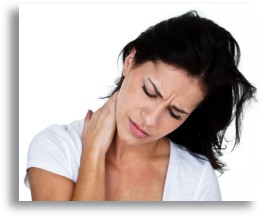
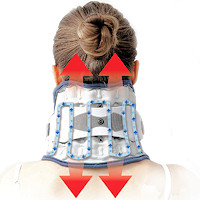 Neck Traction Devices
Neck Traction Devices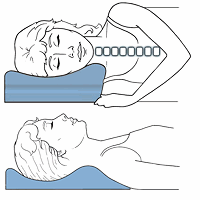 Cervical Pillows
Cervical Pillows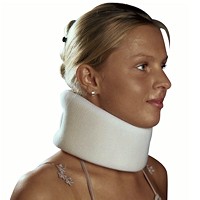 Neck Support Collars
Neck Support Collars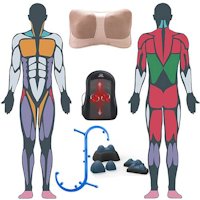 Muscle Therapy Tools
Muscle Therapy Tools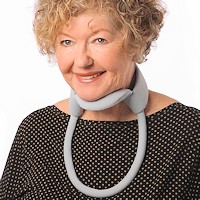 Head Supports
Head Supports Topical Pain Relievers
Topical Pain Relievers Special Pillows
Special Pillows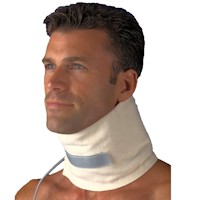 Heat Therapy
Heat Therapy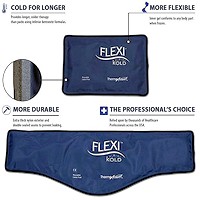 Cold Therapy
Cold Therapy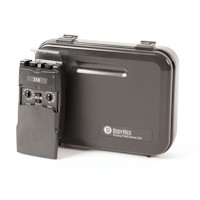 TENS Therapy
TENS Therapy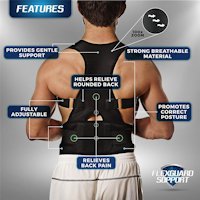 Posture Braces
Posture Braces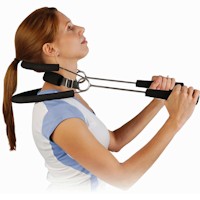 Neck Stabilization
Neck Stabilization Ergonomic Aids
Ergonomic Aids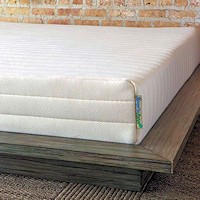 New Mattresses
New Mattresses Relief Supplements
Relief Supplements